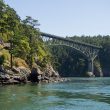Introduction
A Hiatus Hernia may sound complex, but understanding its causes, symptoms, and treatment options is crucial for maintaining digestive health. In this comprehensive guide, we will delve into what hiatal hernias are, how they manifest, and the steps you can take for care.
What is Hiatus Hernia?
Let’s start by breaking down the basics. A Hiatus Hernia occurs when the upper part of the stomach pushes through the diaphragm, a large muscle separating the abdomen and chest. This happens through a small opening in the diaphragm called the Hiatus Hernia, where the tube responsible for swallowing food, known as the esophagus, connects to the stomach. In a Hiatus Hernia, the stomach extends into the chest through this opening.
Understanding the size of the hernia matters: a small one might go unnoticed, causing no problems. However, a larger hiatal hernia can lead to issues such as heartburn. Many people may have a small Hiatus Hernia without ever realizing it, as it often goes undetected unless healthcare professionals discover it while investigating another condition.
Symptoms of Hiatus Hernia
Recognizing the symptoms is essential for early intervention. Let’s break down the signs of Hiatus Hernia, categorized into small and large hernias:
Small Hernia:
- Rare heartburn
- Rare regurgitation
- Rare acid reflux
- Rare trouble swallowing
- Rare chest or abdominal pain
- Rare shortness of breath
- Rare vomiting of blood
Large Hernia:
- Common heartburn
- Occasional regurgitation
- Possible acid reflux
- Possible trouble swallowing
- Occasional chest or abdominal pain
- Occasional shortness of breath
- Emergency vomiting of blood
Understanding these symptoms helps individuals identify when it’s crucial to seek medical attention. Persistent symptoms warrant a visit to your healthcare professional for a thorough evaluation.

Causes and Risk Factors
Delving into why Hiatus Hernia occur sheds light on potential causes and risk factors. While the exact reasons aren’t always clear, several factors contribute:
- Age-related changes in the diaphragm: As we age, muscles may weaken, including those in the diaphragm.
- Injury to the area: Trauma or certain types of surgery can lead to weakened muscle tissue, facilitating hernia development.
- Congenital factors: Being born with a larger-than-normal hiatus increases the risk of hiatal hernia.
- Pressure on surrounding muscles: Constant and intense pressure, like coughing, vomiting, straining during a bowel movement, exercising, or lifting heavy objects, can contribute to hernia formation.
Additionally, there are certain risk factors associated with Hiatus Hernia, including being aged 50 or older and obesity. Understanding these factors can aid in preventive measures and early detection.
When to See a Doctor
Recognizing when to consult a healthcare professional is crucial for timely intervention. If you experience lasting symptoms that worry you, making an appointment with your doctor is essential. Early detection enhances the effectiveness of treatment and ensures a better quality of life. Want to Know Other Health Problems And Their Treatments

Treatment Options
The approach to treating Hiatus Hernia depends on their size and associated symptoms. Here’s a breakdown of the treatment options:
- Self-Care Measures: For small hernias, self-care measures and lifestyle changes can often alleviate symptoms. These may include dietary adjustments, maintaining a healthy weight, and avoiding triggers like large meals or lying down after eating.
- Medications: Over-the-counter or prescription medications may be recommended to manage symptoms such as heartburn or acid reflux.
- Surgery: In cases of very large Hiatus Hernia or when other treatments are ineffective, surgical intervention might be necessary. This typically involves pulling the stomach back into the abdomen and repairing the hiatus.
Understanding the available treatment options empowers individuals to make informed decisions in consultation with their healthcare professionals.
Conclusion
In conclusion, understanding Hiatus Hernia and their intricacies is essential for anyone experiencing related symptoms. From recognizing the signs to knowing when to seek medical attention, this guide serves as a valuable resource for navigating hiatal hernias. provides expert insights to ensure comprehensive care, empowering individuals to take charge of their digestive health.












